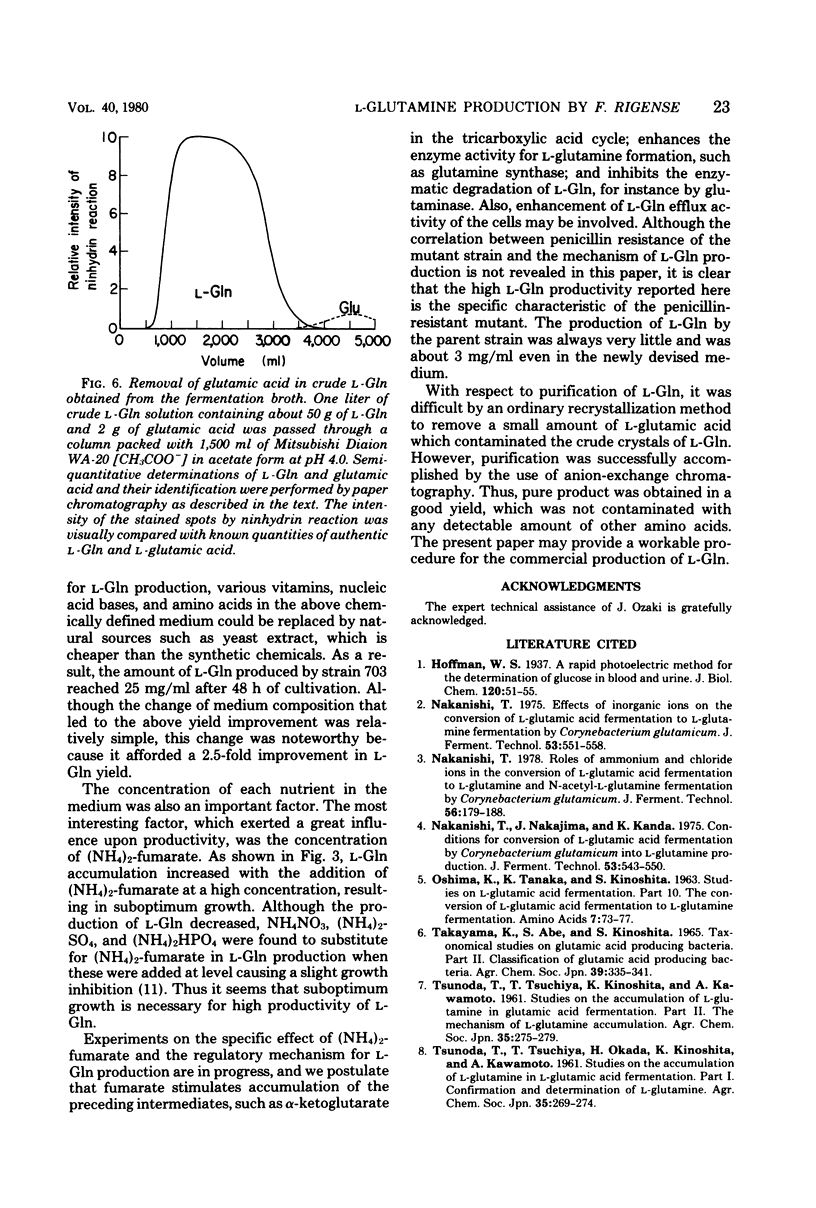Abstract
To establish a practical method for the fermentative production of l-glutamine, cultural conditions for the accumulation of a large amounts of l-glutamine were investigated by using Flavobacterium rigense 703, which was previously reported by us as a l-glutamine-producing mutant. As a result, a yield of 25 mg of l-glutamine per ml was obtained after a 48-h cultivation in a medium containing glucose, yeast extract, (NH4)2-fumarate, KH2PO4, K2HPO4, MgSO4.7H2O, and CaCO3 (pH 6.4). Accumulation of l-glutamine was dependent upon the concentration of (NH4)2-fumarate, and a suboptimum growth at a relatively high concentration of (NH4)2-fumarate was essential for the maximum production of l-glutamine. At the optimum conditions, glutamic acid was formed as a by-product at a concentration of less than 1 mg/ml, but accumulation of the other amino acids was negligible. The product was isolated from the culture broth and readily purified by anion-exchange chromatography. The pure crystals of l-glutamine obtained in an 80% yield were optically and chromatographically pure.
Full text
PDF





Selected References
These references are in PubMed. This may not be the complete list of references from this article.
- Yamada S., Nabe K., Ujimaru T., Izuo N., Chibata I. L-Glutamine formation by Flavobacterium rigense. Appl Environ Microbiol. 1979 Jun;37(6):1063–1066. doi: 10.1128/aem.37.6.1063-1066.1979. [DOI] [PMC free article] [PubMed] [Google Scholar]
- Yamada S., Nabe K., Ujimaru T., Izuo N., Chibata M. Extracellular accumulation of a new amino acid, O-2-hydroxypropylhomoserine, from 1,2-propanediol by flavobacterium rigense. Appl Environ Microbiol. 1978 Jun;35(6):1046–1051. doi: 10.1128/aem.35.6.1046-1051.1978. [DOI] [PMC free article] [PubMed] [Google Scholar]


